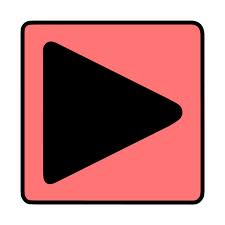Educators who are interested in implementing gamification into their lessons should consider their goal and learning style of their students. This article details three important factors to consider when planning a gamified learning experience: motivation, generational differences, and design. The article also includes examples of applications that use gamification in music learning that can be applied by arts managers.
What Makes Me, innovation from Down Under.
This website is called “What Makes Me”. There are three different sections: What Makes Me, What Makes You, What Makes Us. Each person claims a cube, a cleverly designed multimedia enabled object online and they decorate it with their images, video, and audio files. Each one is very different. The first twelve entries talk about why each individual loves a certain art form or forms - whether it be dance, circus arts, graffiti or something else. All of them are touching and told from the heart. There’s a retired nurse that found out her next door neighbor was a circus performer and has since fallen in love with the circus. There’s a professional rugby driver who drives around looking at the graffiti all over the city. There’s a professional cook who while catering a party, discovered dance for the first time and has since developed a personal relationship with the choreographer.
The common thread that runs between most of these testimonials is the personal connection built with a specific artist or the arts in their neighborhood. It’s about relationships, rather than facilities, and community as the key to these relationships.
The idea around this project was to counteract the perception that the arts in Australia are “associated with images of snobbery and inaccessibility”. The project is run by a company called Wanted Digital and initiated by the Australia Council for the Arts. The participants of What Makes Me are cooperating to build something together- it’s a game. A game that is getting the attention of philanthropic organizations in the US. Wolf Brown recently used this interactive project as an example of participation in the arts in their recent study commissioned by the Jame Irvine Foundation “Getting In On the Act - How arts groups are getting opportunities for active participation”.
What Makes Me is worth taking a second look at. The project engenders enthusiasm that isn’t created from simply being a spectator. Anyone in Australia can be a part of it and there is a hefty presence on the site from diverse populations with Aboriginal people, the disabled, and immigrant communities being well represented. Participants post links to their cube, to their facebook, to their twitter, to other social media sites. The individual act of creation combined with the community have a ground swell effect and foster even deeper love for individual artists and the arts contributions to the community.
Can the arts successfully have a game dynamic?
 A game dynamic simply put is an element of a game: levels of achievement or rewards, economic systems to exchanging rewards or credits, cooperative and/or competitive aspects, design layers that change dynamics from one episode to another, and even a series of collectibles can be represented as game dynamic. Game dynamics have recently contributed towards solving medical mysteries, namely the gene folding break-through made on the fold.it puzzle game online.
A game dynamic simply put is an element of a game: levels of achievement or rewards, economic systems to exchanging rewards or credits, cooperative and/or competitive aspects, design layers that change dynamics from one episode to another, and even a series of collectibles can be represented as game dynamic. Game dynamics have recently contributed towards solving medical mysteries, namely the gene folding break-through made on the fold.it puzzle game online.
Now this remarkable game is being put to use to solve the gene folding challenges of Parkinson’s disease among others. Additionally, there have been arguments that game dynamics are what make sports sectors of the economy flourish. Sports use a game dynamic that creates cooperation through competition. It is easy to see the potential between game dynamics and the arts but adoption of this idea has yet to garner a widespread support. Check out the previous blog: Planning for Engagement for how cell phone voting is being used at the Indianapolis Symphony Orchestra. As another example, The AWARD show at the Joyce SoHo presents a level of competition driven by reward - in this case cash prizes for the winners of voting contests.Some artists have ventured, guns blazing, into game dynamics; the show Best Before by Rimini Protokoll, for instance: “Pulls the multi-player video game out of the virtual realm and rewires it for an intimate theatre setting.”
The answer to the original question posed “Can the arts have a game dynamic successfully?” is yes. Few creative artists or institutions choose to engage audiences through game dynamics whole-heartedly. Through utilizing game dynamics, the arts world can overcome certain aesthetic hurdles and adopt game dynamics for its potential for growth. The result could have an immense impact.
The tools to create these dynamics in the performing and visual arts are available at both high and low technologies, and can be relatively inexpensive. Cell phone voting systems can be purchased from vendors for under $100. At a small scale, usage of http://www.scvngr.com/ allows for a geographic based scavenger hunt and is relatively cost effective. Immediate interaction with audiences can be had by using audience response systems, which are shown to increase attentiveness in schools.
There are rewards at certain institutions for arts patrons who commit to a level of involvement. There is the relatively common backstage pass, open rehearsal, or meet the artist offerings for subscribers or high-level donors, but these rewards carry with them seemingly little appeal to younger audiences in general. (Of course this is with exceptions.) In the philanthropic world, voting contests abound to great success. In the coming months I will be using this blog to explore technological tools for implementing game layers in a variety of different ways. I look forward to the conversations that I hope to have with everyone on this topic!






